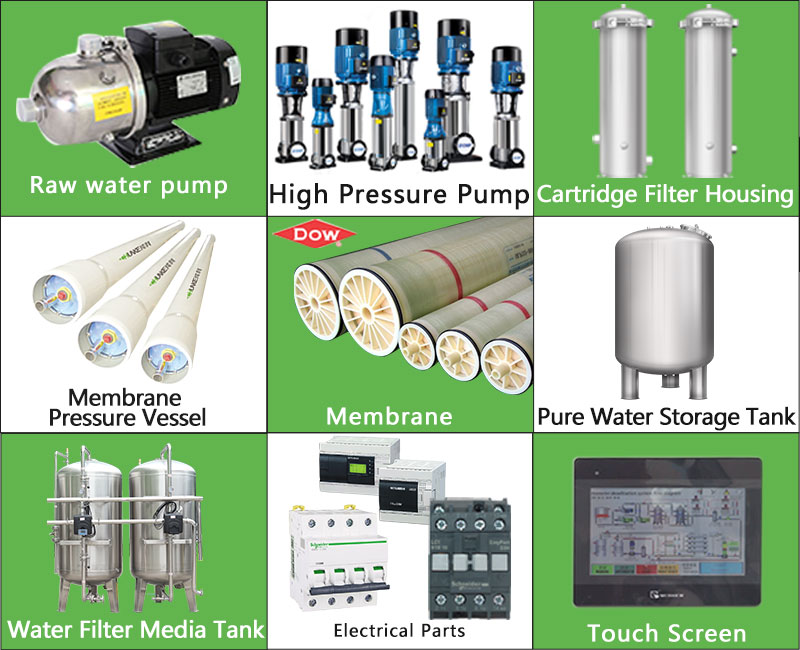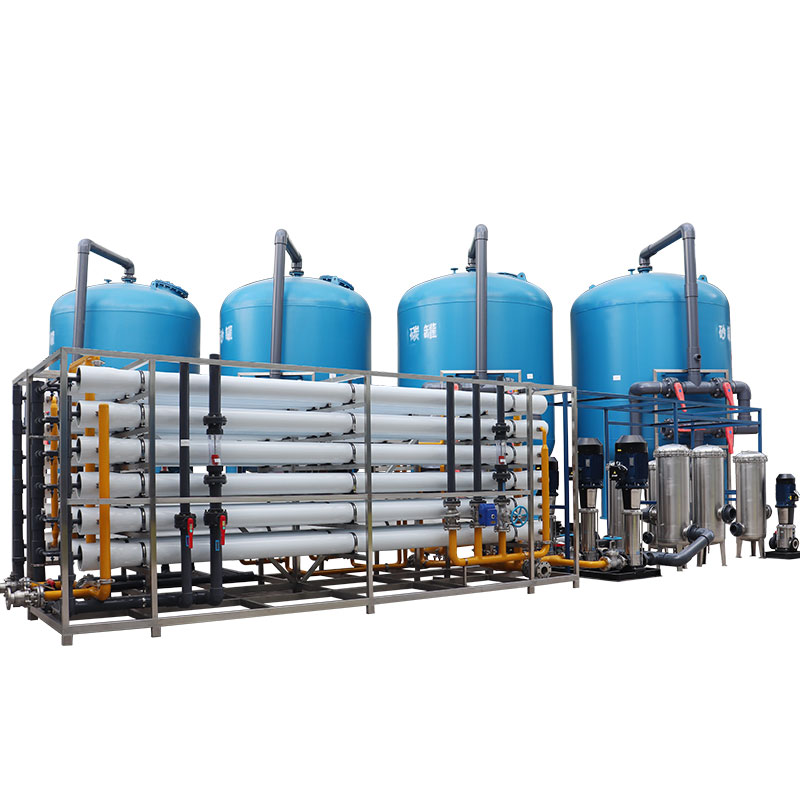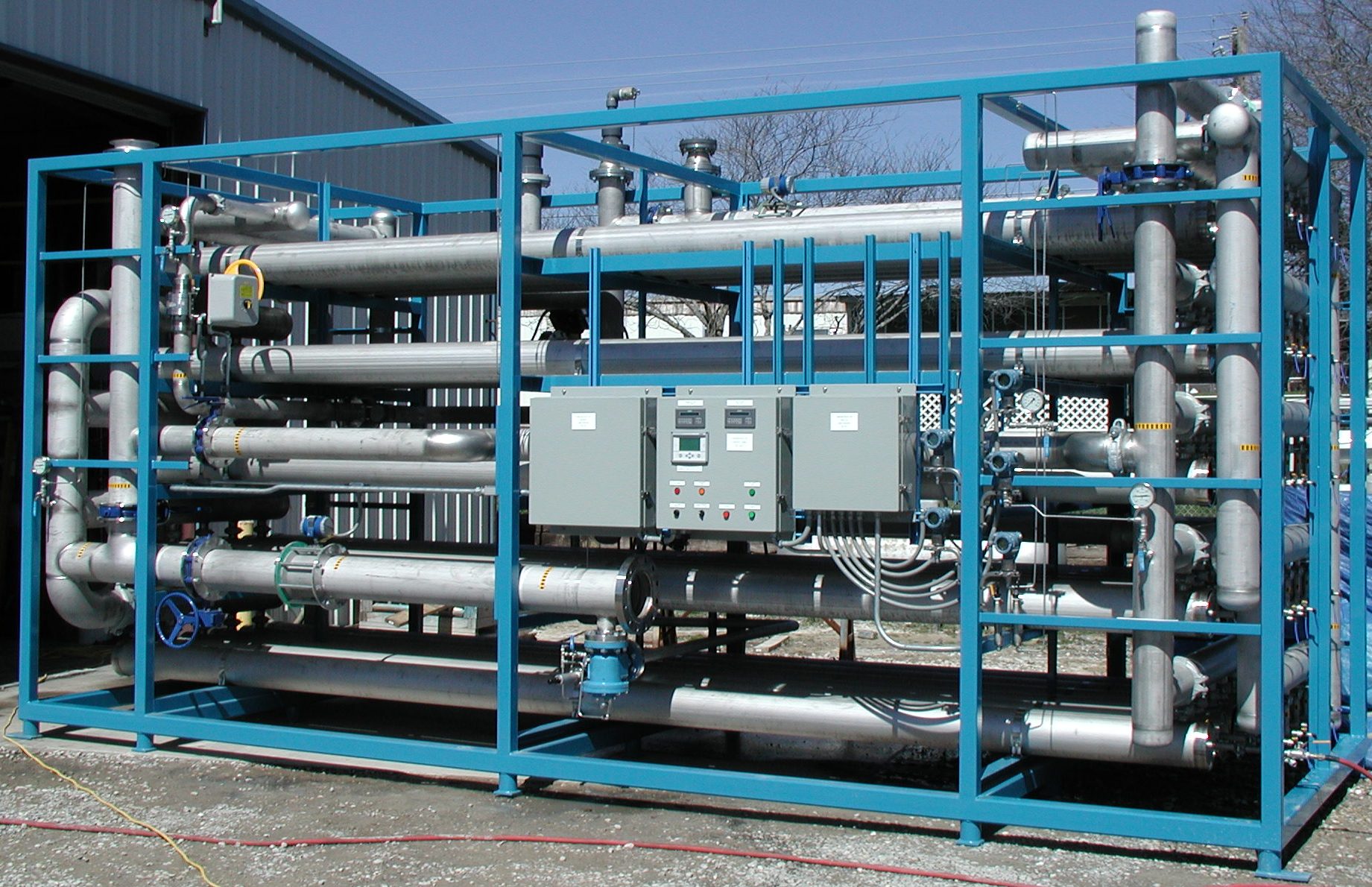What is reverse osmosis brackish water treatment?
Reverse osmosis (RO) technology, as an efficient water treatment method, plays an important role in treating brackish water. Let’s take a closer look at how this technology works and its applications.
1. How RO technology works
First, understanding how RO technology works is key to understanding reverse osmosis brackish water treatment. RO is a process that uses a pressure difference to move water through a semipermeable membrane to remove dissolved organic matter and salts. When the pressurized feed water passes through the semipermeable membrane, part of the water passes through the membrane, while the organic matter and salts dissolved in the water are blocked on the other side of the membrane, thereby achieving water purification and desalination.
2. Composition of reverse osmosis bracketish water treatment system
Secondly, understanding the components of a reverse osmosis brackish water treatment system is crucial to understanding how it works. This treatment system usually consists of a booster pump, a pretreatment tank (including a sand filter, an activated carbon filter and a softener tank), a cartridge filter housing, a chemical dosing system, a high-pressure pump, a membrane pressure vessel, a reverse osmosis membrane and control It consists of panels and other components. These components work together to treat and purify brackish water.
3. Application scope and technical key points of brackish water treatment plants
Further understanding of the application scope and technical points of brackish water treatment plants will help us understand reverse osmosis brackish water treatment more comprehensively. The capacity of brackish water treatment plants typically ranges from 48m3/hour to 7500m3/day. When dealing with brackish water, if the total dissolved solids (TDS) of the water exceeds 1000 ppm, it is called brackish water. For different water source characteristics, the size and number of pretreatment tanks may vary, but the importance of pretreatment cannot be ignored. The sand media filter tank, activated carbon filter media tank, and softener tank in the pretreatment tank contain ion exchange resin, which is essential for removing impurities and organic matter from the water.

What is the workflow of the reverse osmosis brackish water treatment system?
First, the raw water is pressurized by a booster pump and enters the pretreatment tank for pretreatment. Pretreatment tanks usually include components such as sand media filter tanks, activated carbon filter media tanks, and softener tanks, which are used to remove impurities from the water and improve water quality. These treatment steps are crucial to ensure the subsequent operation of the reverse osmosis membrane. Next, the pretreated water enters the membrane pressure vessel and is purified by the reverse osmosis membrane. In this process, only water molecules can pass through the semipermeable membrane, while salts and other dissolved substances are trapped on the other side of the membrane. Finally, the membrane-treated water flows into the water storage tank and becomes purified water resources.

What are the application fields of reverse osmosis brackish water treatment system?
Reverse osmosis brackish water treatment system is widely used in seawater desalination, industrial wastewater treatment, drinking water purification and other fields. In the field of seawater desalination, reverse osmosis technology can effectively remove salt from seawater to obtain freshwater resources. In the field of industrial wastewater treatment, reverse osmosis technology can help companies purify and recycle wastewater and achieve resource reuse and conservation. In the field of drinking water purification, reverse osmosis technology can help improve water quality and protect public health. In addition, reverse osmosis brackish water treatment systems are also widely used in agricultural irrigation, food processing, power industry and other fields. In these areas, reverse osmosis technology can help provide clean water resources and ensure normal production and life.

How to choose reverse osmosis brackish water treatment system?
1. Consider water quality and treatment needs
First of all, choosing a suitable reverse osmosis brackish water treatment system requires considering the water quality characteristics and treatment needs of the raw water. Select the appropriate treatment process and equipment based on the total dissolved solids content of the water, its salt concentration, and the intended use of the treated water.
2. Capacity and production requirements
Secondly, select the appropriate system capacity and specifications based on water treatment volume and production capacity requirements. Brackish water treatment systems of different sizes are suitable for different scenarios and need to be selected according to the actual situation.
3. Technical indicators and equipment quality
Finally, considering the technical indicators of the system and the quality of the equipment are also key factors in choosing a reverse osmosis brackish water treatment system. Ensuring that the system has good filtration efficiency, stable operating performance and reliable equipment quality can ensure long-term stable operation of the system and provide high-quality treated water.

How to maintain the reverse osmosis Brackish water treatment system?
1. Regular maintenance
First of all, regular system maintenance is the key to ensuring the normal operation of the reverse osmosis brackish water treatment system. Regular cleaning and replacement of key components such as filter elements and membrane elements can effectively extend the service life of the system.
2. Monitor operating parameters
Secondly, regular monitoring of the operating parameters of the system is also an important measure to ensure stable operation of the system. Monitoring key parameters such as water quality, pressure, and flow, and detecting and handling problems in a timely manner can prevent system failure and damage.
3. Train operators
Finally, training and technical guidance for operators to improve their operating skills and system management level can ensure the normal operation and effective management of the system.
Through the above measures, the efficient operation and long-term stability of the reverse osmosis brackish water treatment system can be guaranteed, providing users with clean and safe water treatment.






